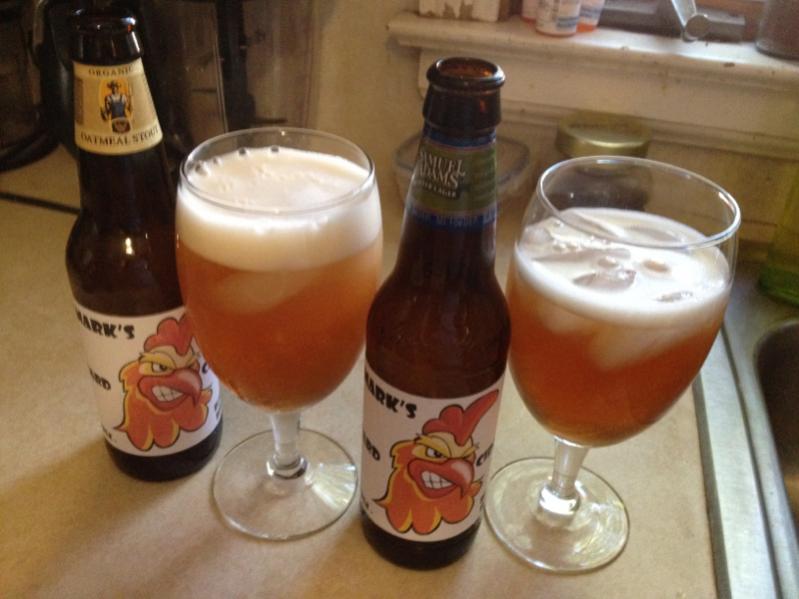I've tried to solve this question myself, and have found a system that works for me, but am curious what others think. Here's my method:
- Start your cider and allow it to ferment until it has about the level of sweetness you want.
- Once this is reached, cold crash your cider to drop as much suspended material, yeast &c out of suspension as possible. There will still be plenty of yeast left for carbonation.
- Bottle your cider and bring it back up to normal fermentation levels. If you have any small bottles (Fever Tree tonic bottles are what I use), fill five or six of these as test bottles.
- When you bring the temperature back up, the yeast will get back to work consuming sugar. After a couple of days (I start at about two to three days after bottling) open one of your small test bottles to see how much carbonation has developed. Do this once a day or so until you think there's enough carbonation in your bottles.
- Once the carbonation level is where you want it, heat a 2/3 full kettle of water to about 140F, and gently place your bottles in the bath. Leave them in for at least twenty minutes. The hot water bath will kill the yeast, stopping fermentation.
Now you can store your cider at room temp without worrying about the bottles exploding, and they'll stay sweet and fizzy.
A couple of points:
- Be VERY careful when handling your carbonated cider bottles--the last thing you want to do is drop one as you're taking it out of the hot water bath and have it explode, spraying hot cider and fragments of glass all over you.
- Do NOT boil your bottles. First of all, it's unnecessary--yeast don't live in temps much above 120F. Second of all, when you increase the temp of a liquid or gas inside a closed space, you increase the pressure, which could cause a bottle to explode.
- For the same reason as above, keep a lid on your hot water bath, just to be on the safe side. I've never blown up a bottle, but it's never a bad idea to be careful.
- I have not had success in keeping my carbonation in Grolsch-type swing-top bottles using this methodI think the heating forces the CO2 out around the seal, and they end up flat. Cap bottles dont have this problem.
- Some might worry that killing the yeast this way would cause autolysis and off-flavors. My experience from several batches done this way is that there is not enough yeast left (esp. after cold-crashing) for this to be a noticeable problem. Stability over time has not been an issue either--I'm literally still drinking a batch of sweet cider I made last October, it tastes great.
- I recommend cold-crashing the bottles again after you kill off the yeast, to improve the cider's clarity. Alternatively (or additionally), you can just stick them in the fridge for a week or so before you serve.
- I've found that doing cider this way limits the alcohol content you can achieve to around 3%, since the cider's OG is not that great, at least not the fresh unpasteurized stuff I get. If you want a more alcoholic cider, you can always boil down the cider to give you a higher starting OG, although this kills the natural yeast. I use champagne yeast in my cider so that's not a concern for me. If you wanted a more alcoholic cider but also wanted to use natural yeast to ferment, you could boil most of the unpasteurized cider you plan to use to get a higher OG, but keep some out as a starter. Allow it to get going and create a bunch of yeast, then add it back to your concentrated cider once it's cool.
This method has worked great for me, although I'll admit I get a little nervous about blowing one up when handling the hot cider bottles. What do people think? Is this crazy dangerous, or crazy smart?
 now. I want a sweet sparkling cider. Why can't I add lactose to my batch (lactose being non-fermentable), then also add dextrose as priming sugar when I bottle? The lactose will sweeten but won't ferment, and the dextrose will give me carbonation. Is my thinking incorrect? Any thoughts on this would be greatly appreciated.
now. I want a sweet sparkling cider. Why can't I add lactose to my batch (lactose being non-fermentable), then also add dextrose as priming sugar when I bottle? The lactose will sweeten but won't ferment, and the dextrose will give me carbonation. Is my thinking incorrect? Any thoughts on this would be greatly appreciated.































![Craft A Brew - Safale S-04 Dry Yeast - Fermentis - English Ale Dry Yeast - For English and American Ales and Hard Apple Ciders - Ingredients for Home Brewing - Beer Making Supplies - [1 Pack]](https://m.media-amazon.com/images/I/41fVGNh6JfL._SL500_.jpg)

























